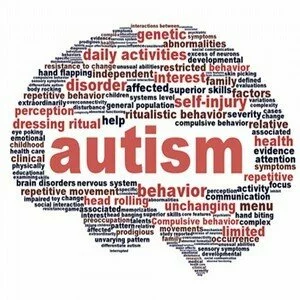Autism is a neuro-developmental disorder characterized by social and communication deficits and repetitive behaviours. The child is unable or finds it difficult to communicate any language, always keeps to himself and plays with himself via repetitive movements.
While the prevalence of Autism is increasing, it’s still not entirely clear exactly how common autism it is. It is said that each time the United States’ Center for Disease Control (CDC) does a monitoring study, the rate of autism goes up — the latest numbers show that 1 in every 68 children born falls on the autism spectrum. However, according to some reports, the number may be significantly lower — studies that use gold standard diagnostic procedures and observe children directly find rates closer to 1 in 150 children in mild cases. The incidence is about 1tp3 per 1000 in severe cases in the United Kingdom.
1.Be aware of the disease
Parents must learn all they can about different health conditions including autism. Online sources, like Autism Speaks (autismspeaks.org), the Autism Science Foundation (autismsciencefoundation.org), and Seaver Autism Center at Mount Sinai (seavercenter.org) are recommended.
There are also several text books and manuals on autism or autism spectrum disorders (ASD). Several articles have been written in newspapers and health magazines, they should be sourced out and read.
2.Look out for symptoms
All parents should keep an eye out for language deficits, the inability to form joint attention; lack of response to name; lack of interest in others or whatever is happening around him or her; excessive sensitivity to noise and performance of the same act repeatedly. Suspect if he/she keeps to himself/herself, cannot imitate what the parents or senior siblings do.
3.You can go for Screening
In developed countries it is now routine to screen all children between the ages of 18 months and 24 months for autism. There are standard protocols for this screening; Modified Checklist for autism and if need be, Gold Standard Evaluation for Autism done by experts in the field.
All children with suspected autism could be subjected to genetic testing using chromosomal microarray, the paediatrician will you whether genetic testing is appropriate for your child.
In some cases, genetic testing can help guide the child’s treatment.
4.See a specialist if in doubt
As in many of such conditions, you must seek a second opinion and also see an autism specialist.
5.Identify available Resources
Try to identify all the human resources and social infrastructure that will help in the treatment of your child around your community, within your country and even abroad. There are several institutions today that are dedicated to the treatment of conditions like autism. You must look out for as many as possible as each will have its area of strength.
6.Go for early treatment
Once the diagnosis of Autism is confirmed, treatment must commence and may combine speech therapy, occupational therapy, physical therapy, and applied behavioral analysis (i.e., ABA)., ABA helps to teach children skills using positive reinforcements. It is now well accepted that the earlier and more intensive the intervention, the better the result.
Awareness about ASD and available treatment options have improved tremendously over the past few decades; the services available for families are much better today in developed countries.
In those days autism meant sentence to life-long misery for both the child and the parents but now there are many things that can be done. The interventions we have today can lead to real improvements.
Parents are no longer helpless — families can be empowered to develop clinical skills such that every interaction with their child can be potentially therapeutic.
7.Possible Consequences
Autism is a life-long condition and has no cure but treatment if appropriate and started early can improve the condition of the child tremendously. There are three classes of autism: Severe, moderate and mild based on the number of symptoms exhibited.
Children with mild autism may go on to live independent lives as adults with their own families (wives and children).
Children with moderate autism may live semi-independent lives with support from their families and social services.
While children with severe autism are likely to spend all their lives in specialized institutions for autistic conditions.








No Comments